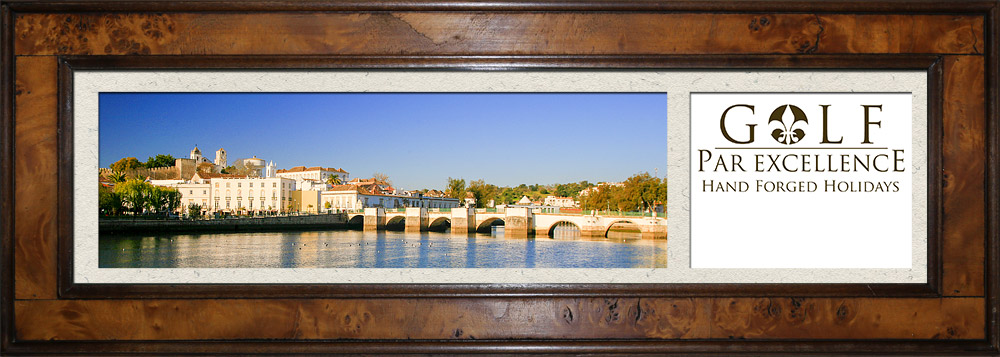GOLF HOLIDAYS IN TAVIRA & MONTE REI
The best golf courses on the eastern Algarve.
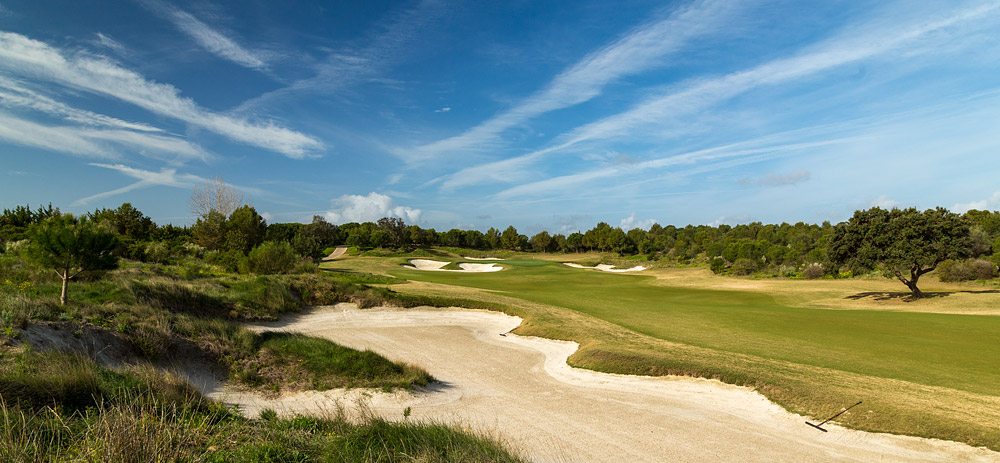 Monte Rei Architect: J. Nicklaus (2004). 18 holes: 6,505m: Par 72.
Monte Rei Architect: J. Nicklaus (2004). 18 holes: 6,505m: Par 72.
The stand-out course on the Eastern Algarve where no expense has been spared in creating a supreme golfing environment. At Monte Rei you will be spoiled from the moment you arrive. A large expanse of quite hilly terrain where the holes ride the contours, creating some dramatic views and approach shots. Holes (and Tee-times) are set well apart (buggies are compulsory) so you really feel that each hole is your own. Expensive maybe (although range balls and buggies are all included in the Green-fee), but a great day out.

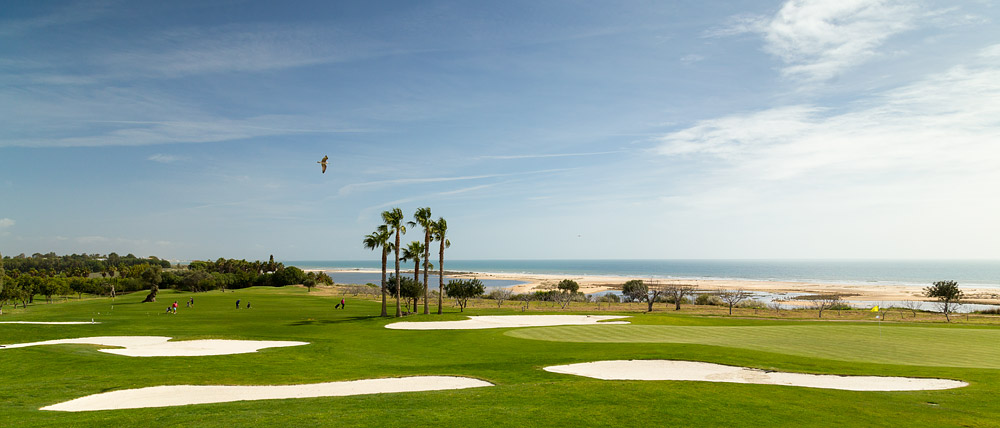 Quinta da Ria Architect: R. Roquemore. 18 holes: 6,016m: Par 72.
Quinta da Ria Architect: R. Roquemore. 18 holes: 6,016m: Par 72.
Quinta da Ria and Quinta de Cima form one Golf Club. Of the two courses, Quinta da Ria is on the sea side of the street and has the prettier scenery with many holes running close to the water, offering views out over the local harbour. Quite an open area with a few olive groves around the courses, but generally you will catch plenty of sunshine on your way around! There is a lot of water in play, increasingly so as the round progresses, the 17th (above) is a particularly strong hole with water to navigate around twice.

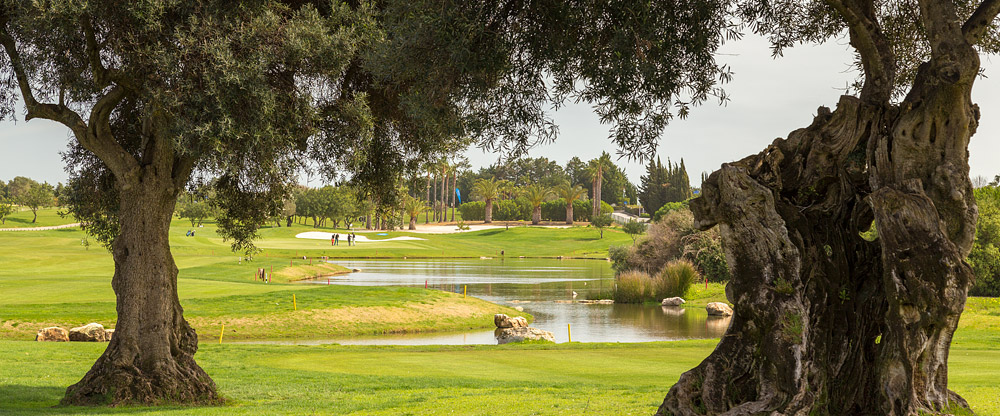 Quinta de Cima Architect: R. Roquemore. 18 holes: 6,256m: Par 72.
Quinta de Cima Architect: R. Roquemore. 18 holes: 6,256m: Par 72.
On the inland side of the lane, Quinta de Cima doesn’t have the sea views that its sister course enjoys, but arguably the stronger holes. The course is a tougher test of golf with more trouble to be found off the Tee in the shape of olives and cork-oaks, plus some lakes and a stream that runs right across the Fairways on several holes – distance control is vital!

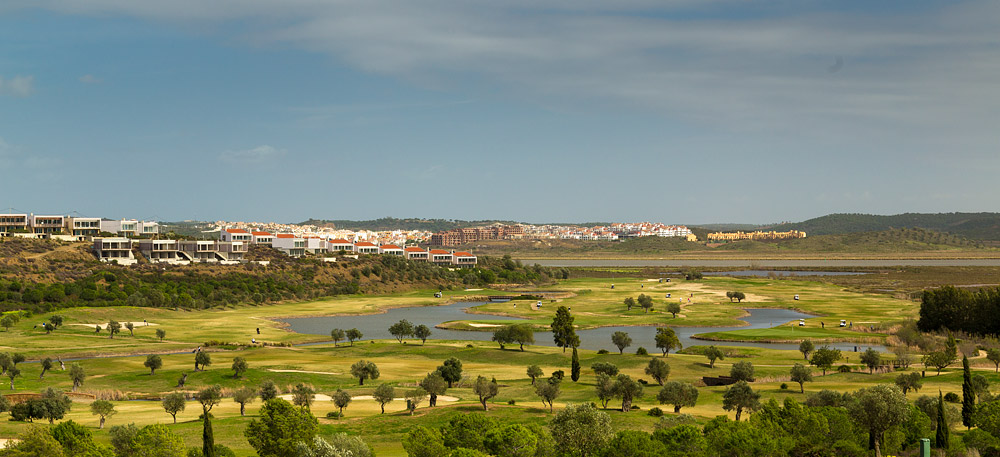 Quinta do Vale Architect: S. Ballesteros. 18 holes: 6,206m: Par 72.
Quinta do Vale Architect: S. Ballesteros. 18 holes: 6,206m: Par 72.
Close to the river on the Portuguese bank the course designed by the late Seve is a tough test of golf, as you might expect from one so talented. The front nine is on the flatter land below the Clubhouse and has plenty of water to negotiate – particularly from the Tee where there is often a lake, stream or pond just on a good drive. If you are unable to carry 200yds, it might be worth considering the white Tees… The back nine moves up into hillier terrain, where the lie of the land becomes increasingly important. Unfinished houses lie around the course sadly, but hardly ever intrusive.

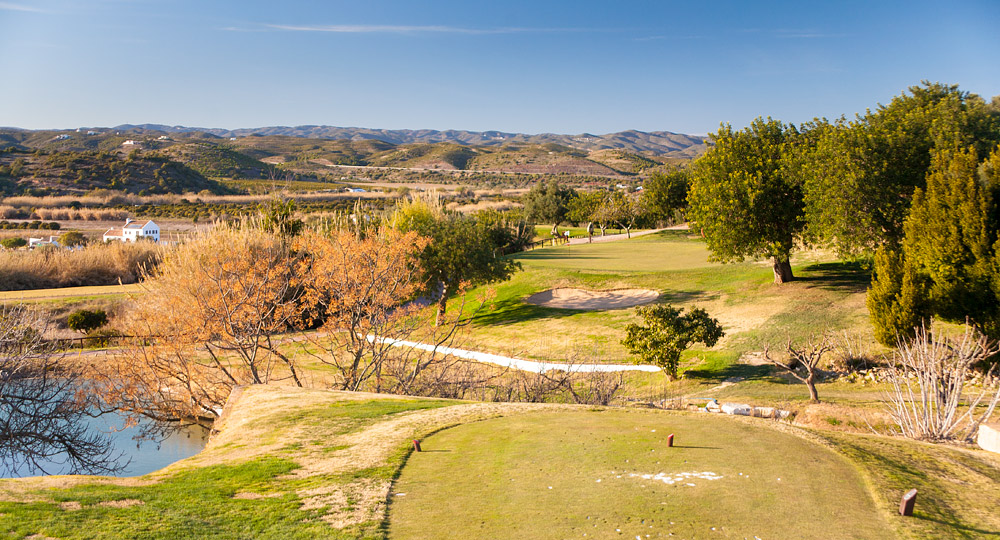 Benamor Architect: H. Cotton (1969). 18 holes: 5,497m: Par 72.
Benamor Architect: H. Cotton (1969). 18 holes: 5,497m: Par 72.
Benamor was the first golf course to be built to the East of Faro and opened the floodgates for others to follow. The course has a simple, rustic charm that is very appealing; it feels as if you are playing through the original countryside with farmland on three sides (the town on the fourth). Perhaps not as neatly trimmed as some other courses, but this seems to go with the natural feel of the setting. The old farmstead and fine church next to the wooden Clubhouse adds a nice touch of Portuguese authenticity.

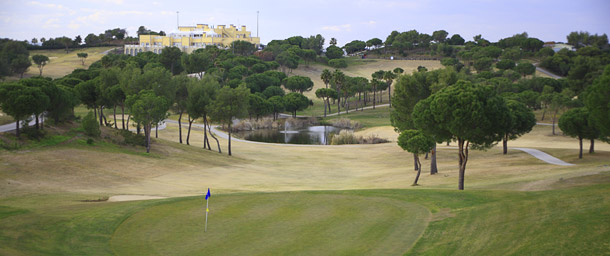
Castro Marim Architect: T. Murray. 18 holes: 5,574m: Par 72.
The original eighteen holes were built in a compact hilly zone and consequently have quite a cramped feel to them. There are some fairly steep elevation changes and the holes are quite close together in places. The new nine, which has just opened, is on much more suitable terrain with more space for the holes, although far from level ground! There are some tough Tee shots to “enjoy” at Castro Marim with long carries over water, so think carefully before heading for the Back Tees.

And just over the border in Spain...
 Valle Guadiana (Costa Esuri) Architect: Aymerich Inc. 18 holes: 6,250m: Par 72.
Valle Guadiana (Costa Esuri) Architect: Aymerich Inc. 18 holes: 6,250m: Par 72.
A tremendous piece of land alongside the estuary that has a real links feel in places, especially in the Summer when the burning sun has hardenend the Fairways and burnished the Greens with that slippery sheen that strikes fear into any golfers heart as the putter is extracted from the bag! Great fun and great value too.
Originally branded 'Costa Esuri', it was a Spanish housing project, started just before the crash of 2008, so rows of empty flats are clustered around the Clubhouse and the shell of an hotel towers over it. The course then fell into liquidation in 2015; however two Members - Jaime and Xavier - battled hard and invested their life savings into saving what is potentially a fine, links-like course. In late 2019 it was bought by the Isla Cañela group and has had a large amount of investment pumped in to the Greens and Fairways, bringing it back to a very good standard once more: the future looks bright at Valle Guadiana!

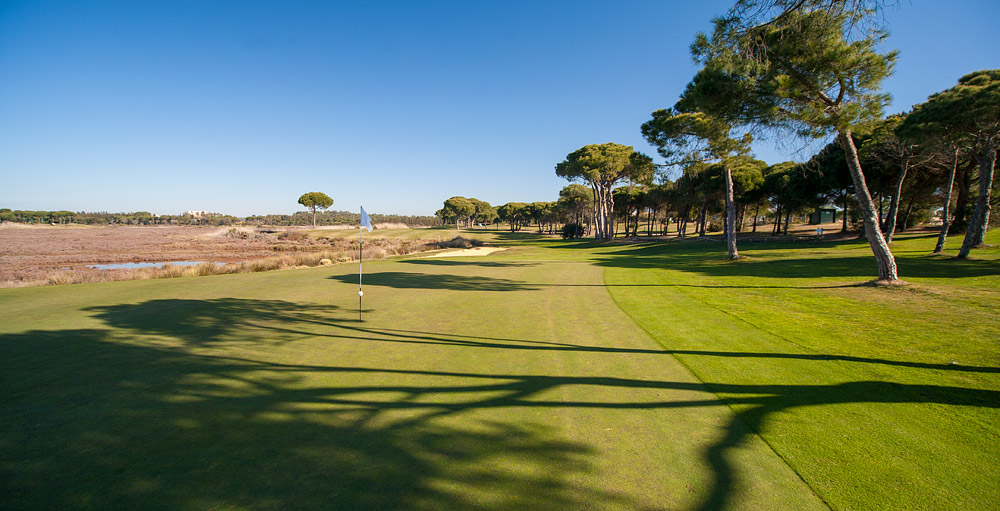 El Rompido - South Architect: A. Alvana. 18 holes: 6,148m: Par 72.
El Rompido - South Architect: A. Alvana. 18 holes: 6,148m: Par 72.
El Rompido is situated in a nature reserve, a large wetlands area. The South course begins amongst Parasol Pines over land with some small rises and falls that add a little extra interest to your game. The fun really starts around the turn from where the holes run around the edge of a large area of marshland. This combination creates some lovely looking holes, although with out of bounds on the right pretty much every hole, may not favour the right-handed slicer! Being a Nature Reserve also brings the benefit of no buildings on the course, so a very natural feel to the overwhelming majority of the holes.

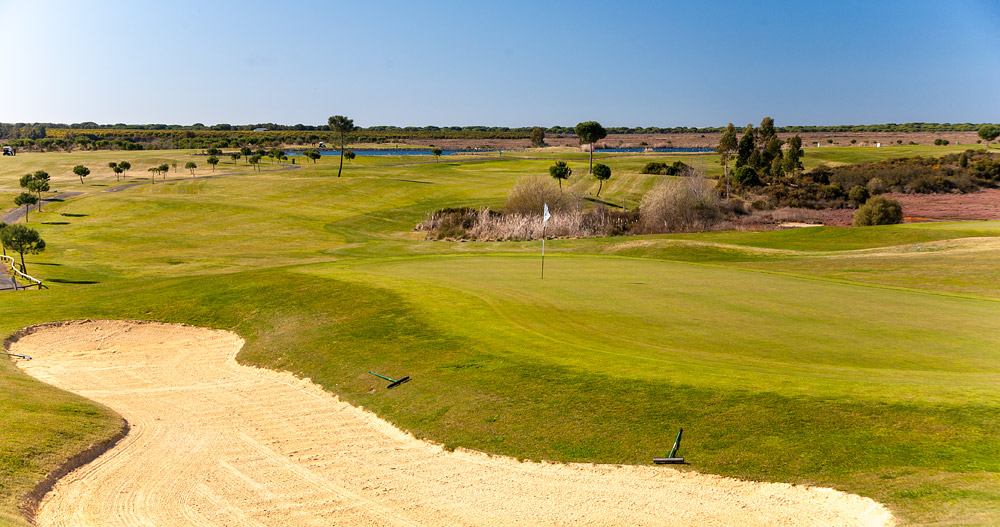 El Rompido - North Architect: A. Arana. 18 holes: 6,095m: Par 72.
El Rompido - North Architect: A. Arana. 18 holes: 6,095m: Par 72.
The North course is the newer of the two courses and starts just over the road, it also borders the Nature Reserve in places. The land here feels younger, but plantations of Parasol Pines will add antiquity as the years roll by. The holes themselves are well-designed making use of the relief of the land – there is a sort of ridge that runs across the course around the tenth.

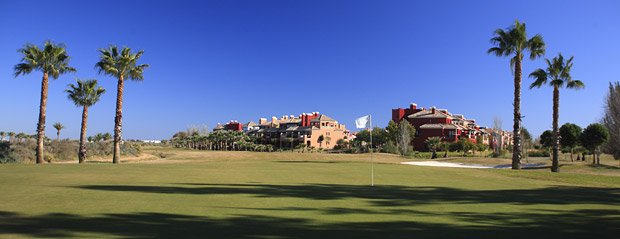
Isla Canela Architect: J. Aguera. 18 holes: 6,248m: Par 72.
A shorter course that lies close to the border and the sea on very flat terrain, making it an easy and enjoyable walk. The holes are not long, but very pretty with planted palms and a few water features around the course. Low Handicappers might like more of a test, but for those embarking on their golfing career or nearing the twilight rounds it is an enjoyable place to stay. Hotel and apartments surround the course, which means it can get busy during peak holiday times.


Islantilla Architect: E. Canales. 18 holes: 6,008m: Par 72.
A vast development of a big hotel, as many apartments as possible and villas to boot. When you arrive in the car park it’s hard to imagine there are nine holes here never mind 27! The course is squeezed in between the buildings and holes 1-9 are a little extreme in places: 10-27 are have a little more room to play in, yet always with houses looming over you.

Other courses to consider:-
All the Vilamoura golf courses just west of Faro are easily reachable too - please refer to our Vilamoura pages for details - Vilamoura Golf.

